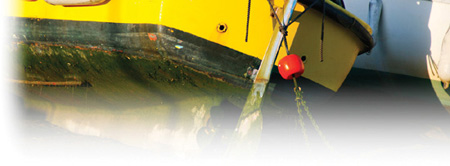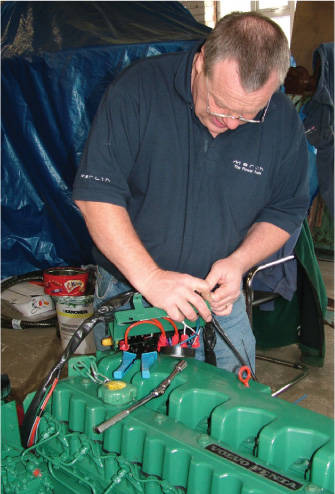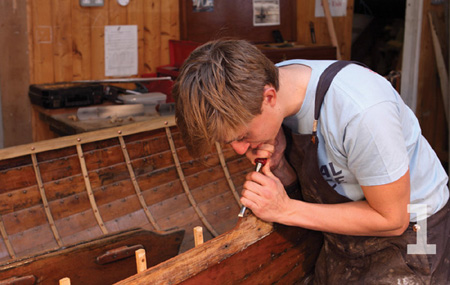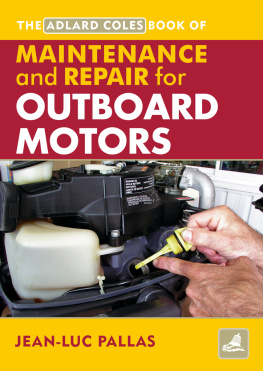
Published by Adlard Coles Nautical an imprint of Bloomsbury Publishing Plc
4951 Bedford Square, London WC1B 3DP
www.adlardcoles.com
Copyright Adlard Coles Nautical 2012
First edition 2012
ISBN 978-1-4081-3321-7
ePub: 978-1-4081-5917-0
ePDF: 978-1-4081-5123-5
All rights reserved. No part of this publication may be reproduced in any form or by any means graphic, electronic or mechanical, including photocopying, recording, taping or information storage and retrieval systems without the prior permission in writing of the publishers.
The right of the authors to be identified as the authors of this work has been asserted by them in accordance with the Copyright, Designs and Patents Act, 1988. A CIP catalogue record for this book is available from the British Library.
Produced for Adlard Coles Nautical by Ivy Contract.
Project designer: Lisa McCormick
Designers: Alistair Plumb and Luke Herriot
Note: while all reasonable care has been taken in the publication of this book, the publisher takes no responsibility for the use of the methods or products described in the book.
Contents


The ideal boatowner would be a boatbuilder/sailmaker/mechanic/electrician/plumber/welder who also happened to know how to navigate a boat! Of course, none of us have all those skills, so when things go wrong with our beloved boat we invariably have to call in an expert to help with some aspect of the work. And that can use up precious cruising funds. This book aims to empower boatowners with the knowledge to fix the damage themselves and to reduce the need for outside help. That way, there will be more in the kitty to go cruising which is where the fun really starts!

Dont be put off wood because you dont have all the skills. Its a forgiving material which most boatowners can learn to master.

Learning to fix your engine can make the difference between a day out and waiting in the marina for the mechanic to arrive.
Essential repair skills
Start here for basic tool skills, advice on essential spare parts, setting up a portable workshop, and surveying your own boat. Why spend money on a surveyor when you can do it yourself?
Hull and deck repairs
Crunch! This is the bit where those big hull repairs are carried out, covering everything from filling scratches in the gel coat to treating osmosis, and even replacing a section of hull. Theres also important information on repairing damaged rudders, checking keel bolts, and replacing deck fittings.
Wooden boat repairs
Wooden boats are like a good wine: they get better as they get older but they can also become corked! Specialist knowledge includes how to use woodworking tools, replacing rotten planks, doubling up fastenings, and resealing a coachroof.
Steel and ferro-cement repairs
Key skills are welding and plastering, but theres a whole host of other factors to consider if you own a steel or ferro-cement boat, such as getting paint to stick to the hull, and how to replace deck fittings.
Domestic repairs
Damage that happens below decks can crucially affect your sailing comfort. Learn some essential plumbing and upholstery skills, and how to keep the cabin warm.
General mechanics
Seized-up seacocks can be inconvenient as well as dangerous but different brands have different solutions. And there are some vital tips on keeping the oil flowing through your hydraulics, too.
Electrical repairs
Tracing an electrical fault can test the patience of a sea saint. Find out how the electricians do it and how to deal with specific problems, such as autopilot and windscreen wiper failure.
Engine repairs
There are whole books written about engine repairs but have you got time to read them? This chapter covers all the essentials, from dealing with air locks to fitting the right propeller, plus comprehensive troubleshooting.
Motorboat repairs
Vital information for petrolheads, including fitting new trim tabs, refastening a RIB console, and stripping down a sterndrive.
Sailboat repairs
Ripped sails, seized winches, corroded masts this is the price we pay for the pleasure of voyaging under sail. This chapter suggests ways of dealing with spar, sail and rigging damage.

Learning to use polyester resin and fibreglass cloth is essential for tackling hull repairs on most modern yachts.

You know its serious when you have to drop your boats keel. This yacht was reassembled and is now sailing the Med.
Dinghy repairs
The smaller the boat, the bigger the pleasure, they say. But you still need to know how to patch up the hull, refit loose fittings and keep the trailer wheels turning.
Outboard repairs
This chapter shows how to get a stubborn outboard started (clue: it might be your posture), plus advice on repairing faulty engine controls, getting water out of the system, and descaling your waterways.
A job done well should enhance your boating experience.

When undertaking any boat repair project its vitally important to create a safe and efficient working environment. If it is done properly it will not only minimise the risk of injury, but will speed up the workflow and help to produce a neat and professional job.
A hazard assessment is key to creating a safe working environment. At sea all skippers are accustomed to being constantly on the lookout for hazards, and this is a skill that can be easily transferred to the boatyard. Before starting each project identify all the potential risks, and ensure youre prepared to handle each one.
Ladders and staging
Many boatyard accidents occur when unsafe ladders or temporary staging are erected to allow you to work on your boats topsides. Ladders should be placed on level ground, at an angle of 15 degrees to the vertical, and should be tied to a strong deck fitting to prevent them capsizing or slipping away from the boat.
At the very least, when working your boats topsides, staging should be laid on substantial trestles, again on level ground. The minimum recommended safe width for such staging is 2ft (60cm) and a toe board on the outer edge should be included.












![Shanks - Essential bicycle maintenance & repair: [step-by-step instructions to maintain and repair your road bike]](/uploads/posts/book/235248/thumbs/shanks-essential-bicycle-maintenance-repair.jpg)











